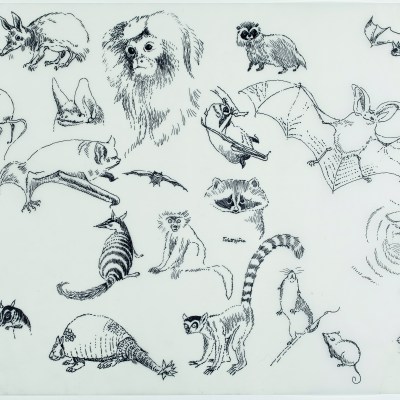The tale of how Alice’s Adventures in Wonderland came to be written has been told many times. One day in July 1862, Charles Lutwidge Dodgson, a mathematics don at Christ Church in Oxford, rowed the three young Liddell sisters to Godstowe on the outskirts of the city. As they glided along, the girls asked for a story and Alice’s adventures began…
The text was completed seven months later with 37 illustrations crudely drawn by the author himself. (Capturing the animals was challenging, so Dodgson had borrowed a natural history book from a colleague at Christ Church.) Encouraged by his friend the children’s author George Macdonald, who tested Alice on his own children, Dodgson decided to publish the book at his own expense under his pen name Lewis Carroll.
The illustrations, however, remained a problem. Dodgson began to transfer them to wood blocks and took one to Orlando Jewitt, a wood engraver in Camden Town. After a meeting with his publisher, Macmillan, he decided to approach a professional draughtsman as well. He wrote to the Punch journalist Tom Taylor asking for an introduction to John Tenniel: ‘I want some figure-pictures done in pure outline, or nearly so, and of all artists on wood, I should prefer Mr Tenniel.’
Sir John Tenniel (1889), John Tenniel. National Portrait Gallery, London

In Sir John Tenniel, Alice’s White Knight (1991), Rodney Engen describes the artist as a ‘supreme gentlemanly outsider, living on the edge of respectability’. Tenniel’s family were French Huguenots who settled here in the 17th century and established themselves in Liverpool. Tenniel was born in 1820, the year in which his parents moved to Bayswater in west London. Family friends included the painter John Martin, who became his artistic mentor; with Martin’s son Leopold, he sketched classical statues at the Townley Gallery and copied from books of costume and armour and from medieval manuscripts in the British Museum. He enrolled at the Royal Academy Schools where senior academicians included Turner, Landseer and Maclise. Narrative painting was popular and Tenniel produced illustrations to Sir Walter Scott’s novel The Fortunes of Nigel; his illustrations for an edition of Aesop’s Fables published by John Murray in 1848 eventually led to the invitation from the editor of Punch to join their senior artists.
Tenniel’s representation of Alice and the White Rabbit are closely based on Dodgson’s originals. His rendering of the other beasts resembled his use of animals in his Punch cartoons, in which they would take on human elements for the purpose of satire; a frequent feature is an open-mouthed fish dressed as a person. And while some have detected the influence of Darwin’s theory of evolution in Tenniel’s depictions of Alice’s animal companions, Tenniel evidently drew on his own wide knowledge of the representation of animals in art, particularly medieval bestiaries.
The White Ram and Black Gryphon (Dacre Beasts) (1507–1525?). Victoria and Albert Museum, London

In ‘Alice: Curiouser and Curiouser’, recently at the V&A, curator Kate Bailey and designer Tom Piper choreographed an amazing set of installations exploring Carroll’s novel and its enduring afterlife. An extraordinary visual inspiration for Tenniel’s illustrations could be found just a few strides away. Standing guard on the steps between the Raphael Cartoon Court and the British Galleries are the four early 16th-century heraldic Dacre Beasts from Naworth Castle in Cumbria: the red bull, the crowned dolphin, the black gryphon and the white ram. Tenniel stayed at Naworth with the 7th Earl of Carlisle and admired these remarkable creatures in situ.
Rare survivals from a rich tradition of heraldic ornament, they were commissioned by Thomas, Lord Dacre (1467–1525), a formidable soldier whose military prowess was epitomised by his battle cry ‘a red bull, a red bull, a Dacre, a Dacre’. The red bull was the supporter of his coat of arms and crest. The crowned dolphin represents Lord Dacre’s wife’s family, the Greystokes; the black gryphon stands for his forbears the Dacres of Gilsland and the white ram for the de Multon family. The long-legged stance of the bull, gryphon and ram with feet poised and front paws clasping their banner staves anticipates Tenniel’s illustration of Alice between the Mock Turtle and the Gryphon as they prepare to dance the Lobster Quadrille. John Tenniel’s father was a dancing master so the artist was perhaps conditioned to capture co-ordinated movement.
Alice’s beastly companions add to the universal appeal of the narrative, just as the language of heraldry crosses national boundaries. Alice’s Adventures in Wonderland and Through the Looking-Glass have been translated into 170 languages. Alice: Curiouser and Curiouser is now heading to China and will open in Beijing this spring. As the Chinese New Year ushers in the Year of the Tiger, and says goodbye to the Year of the Ox, animal-loving audiences in Beijing will be equally captivated by this enchanting exhibition.


